By Aparna Alluri
BBC News, Delhi
- Published
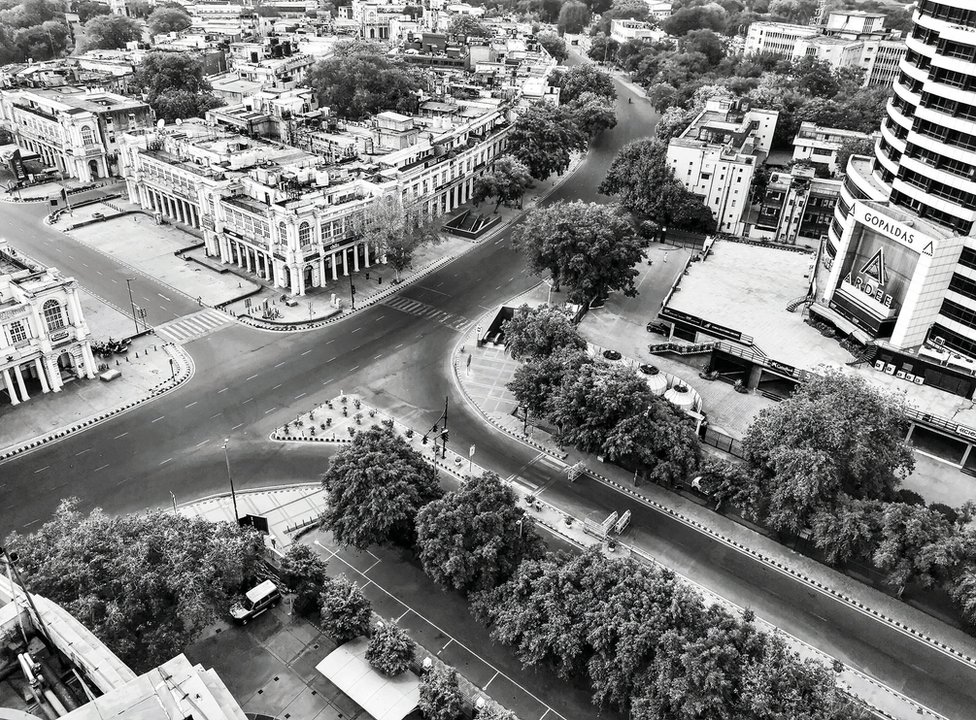 IMAGE COPYRIGHTPARUL SHARMA
IMAGE COPYRIGHTPARUL SHARMAIn late March, India's cities went still as the country locked down to prevent the spread of the coronavirus. Workplaces shut, public transport stopped and people stayed home. But photographer Parul Sharma ventured out to document the deserted capital, Delhi.
"The lockdown was too much for a restless person like me," Sharma told the BBC in a phone interview. "I usually don't like to be in the confines of home. So I decided to go out."
Her family needed some convincing, but they finally came around. So on 3 April, about a week after Prime Minister Narendra Modi announced the lockdown on TV, Sharma stepped out in the late afternoon to chase the best light.
For the next few months, she drove around the city, armed with a camera and the necessary passes, which allowed journalists, officials and essential workers such as doctors and nurses to move around.
"I could see the clouds and birds, but no trace of humans," she said. "It was magical, like getting into la la land. Still and motionless but also beautiful."
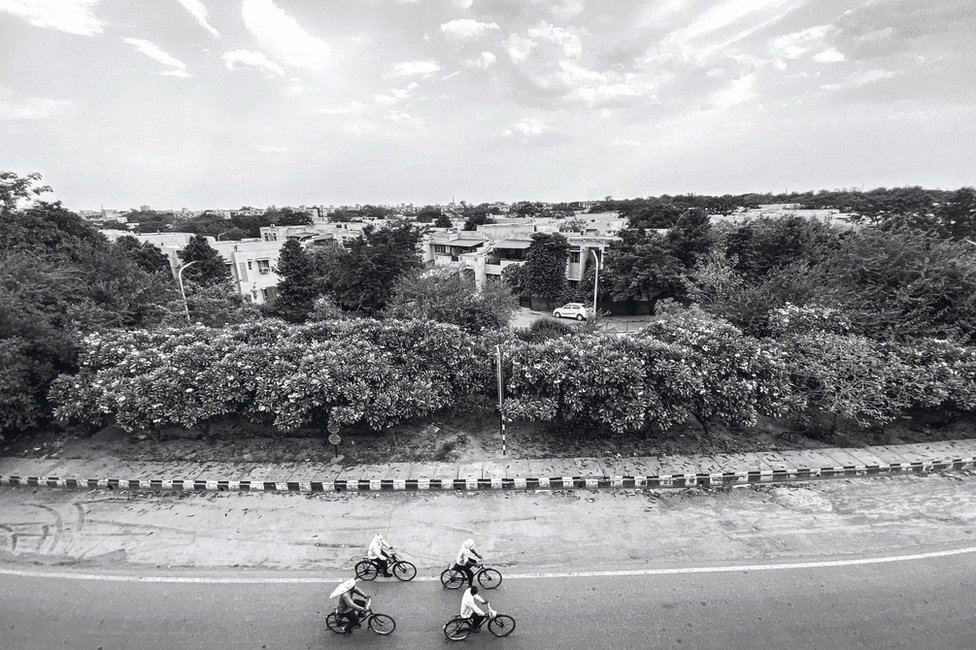 IMAGE COPYRIGHTPARUL SHARMA
IMAGE COPYRIGHTPARUL SHARMAThe result: about 10,000 striking photographs of an unusual moment in Delhi's history. A collection of these stark photographs are now part of her new book Dialects Of Silence, published by Roli Books.
Her first stop, she recalled, was one of her favourite spots in Delhi, and not too far from home. Connaught place, a Georgian-style circular colonnade, lies at the heart of Delhi. The colonial-era construction was a business district for decades before it became a popular hub for shops, restaurants and bars.
But some businesses have stayed on, like the iconic Regal theatre, one of Delhi's oldest and best-known cinema halls.
"I didn't go to landmarks, I went to places that brought back memories of my childhood," Sharma said.
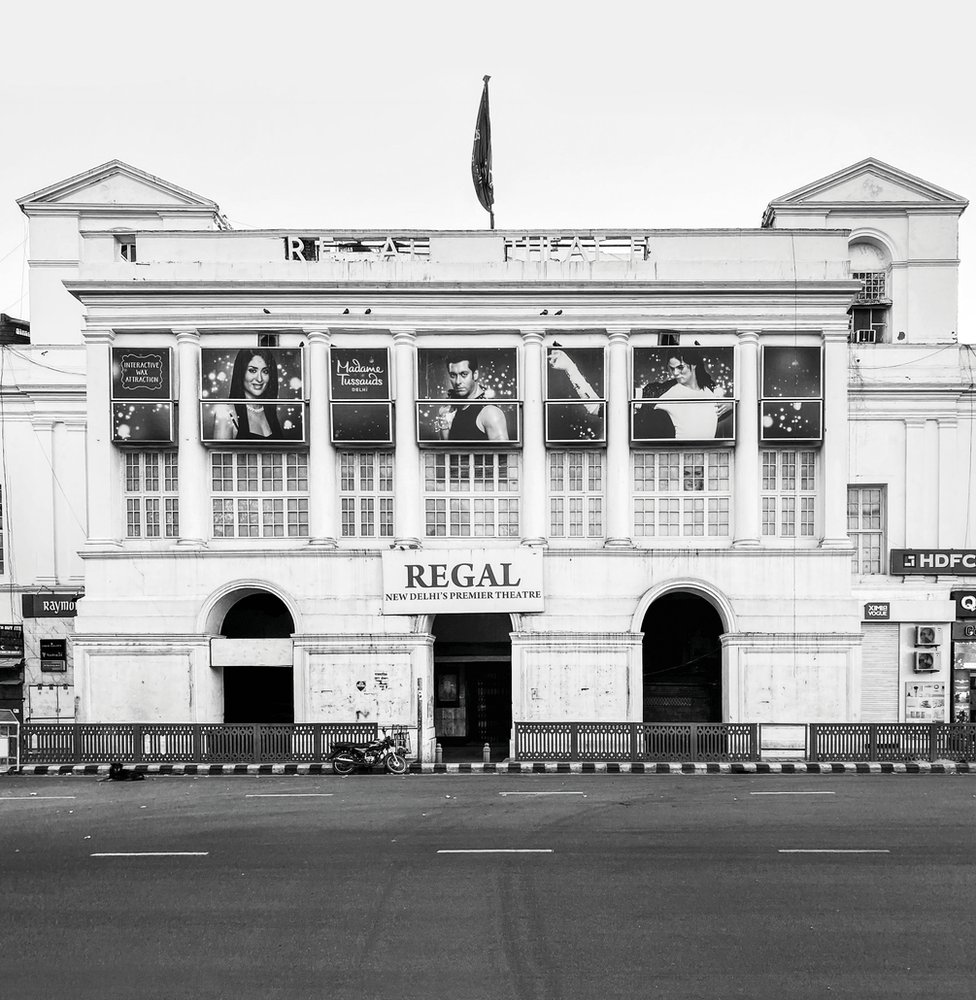 IMAGE COPYRIGHTPARUL SHARMA
IMAGE COPYRIGHTPARUL SHARMAConnaught Place is usually teeming with people - street vendors, shoppers, office goers grabbing a quick lunch or after-work drinks. But on that day, Sharma said, all she encountered was "emptiness and solitude".
"That has its own beauty. And it spoke volumes, as did this aura of absence that was prevalent everywhere," she said.
But the places Sharma sought through her memories were veritable landmarks, including Khan Market, a partition-era business complex that is now a posh, often buzzing, shopping enclave in central Delhi. Its facade is occupied by the famous Bahrisons bookstore, which closed its doors indefinitely for the first time.
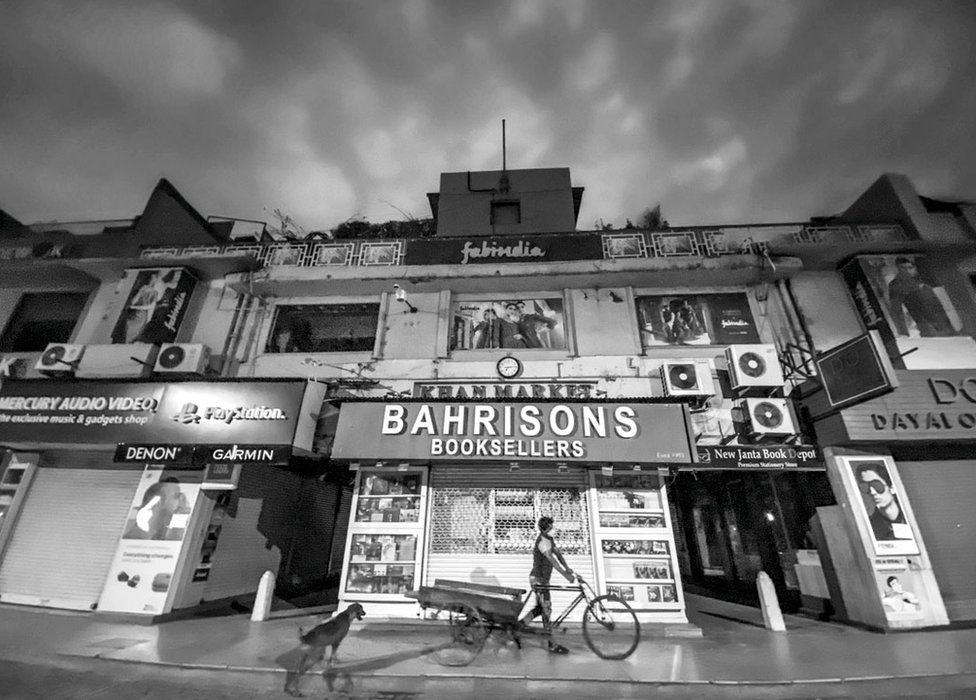 IMAGE COPYRIGHTPARUL SHARMA
IMAGE COPYRIGHTPARUL SHARMAThe writer William Dalrymple said Sharma had produced a "startling portfolio of a locked-down, masked, visored, sanitised, padlocked and disinfected Delhi, almost empty of its people and taken over by bored jawans and preening monkeys". Never had the Indian capital, he said, looked "so unfamiliar, or so surreal".
But no part of locked down Delhi stood in starker contrast to its usual state than Old Delhi, the nearly 400-year-old neighbourhood that was once the seat of the Mughal empire.
"It was like a ghost town. It was most astonishing to see," Sharma said.
The narrow lanes, flanked by crumbling buildings that hint at past splendour, are always packed with people and vehicles of all sorts, from cycles to carts to cars.
 IMAGE COPYRIGHTPARUL SHARMA
IMAGE COPYRIGHTPARUL SHARMAEven the Jama Masjid, Delhi's most famous mosque, had gone quiet. Driving through Old Delhi in the night, Sharma said, felt both "eerie and beautiful".
"My quest was to seek beauty," she said. But then things changed as the lockdown progressed, Covid-19 case numbers gradually climbed and she continued to shoot.
For the people of Delhi, the novelty of the lockdown - and the desolate charm it brought to Indian cities - was soon punctured by uncertainty and challenges. Sharma often drove past AIIMS, one of India's biggest public hospitals, on her way to and from shoots. One day, she decided to stop and talk to the people who were camped outside because the hospital had shut down its outpatient wing to focus on Covid-19 care. It was there she decided to turn her lens on those suffering amid the pandemic.
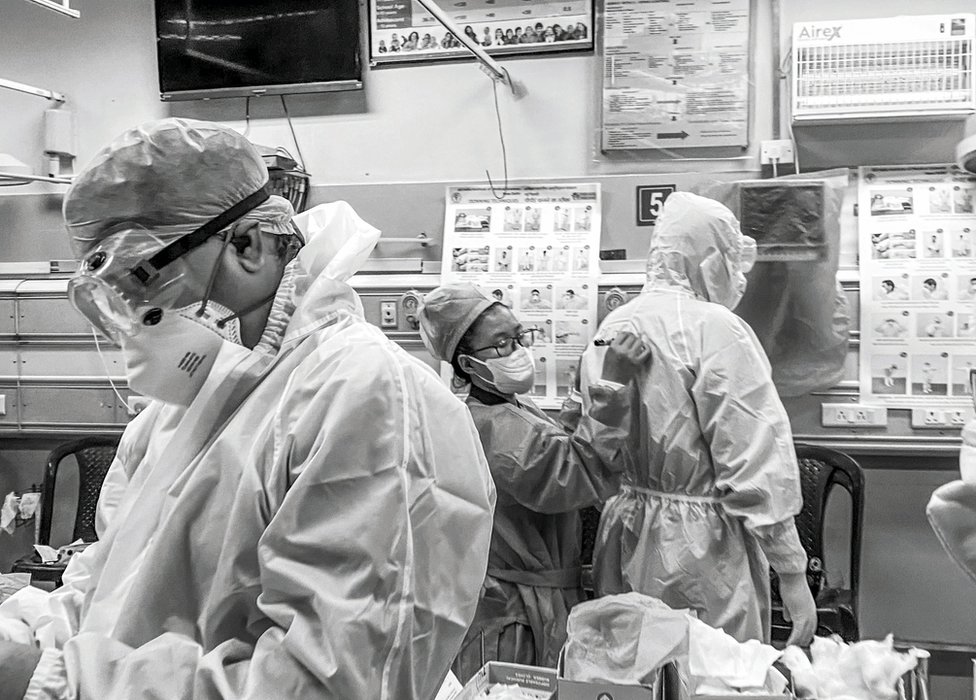 IMAGE COPYRIGHTPARUL SHARMA
IMAGE COPYRIGHTPARUL SHARMASharma visited the AIIMS' Covid-19 wing, where she photographed doctors as they put on the now-familiar PPE suit.
She also visited a Covid-19 care centre, where she photographed residents, including a young girl. "She was having a good time. She asked the PPE doctors to braid her hair," Sharma recalled, laughing.
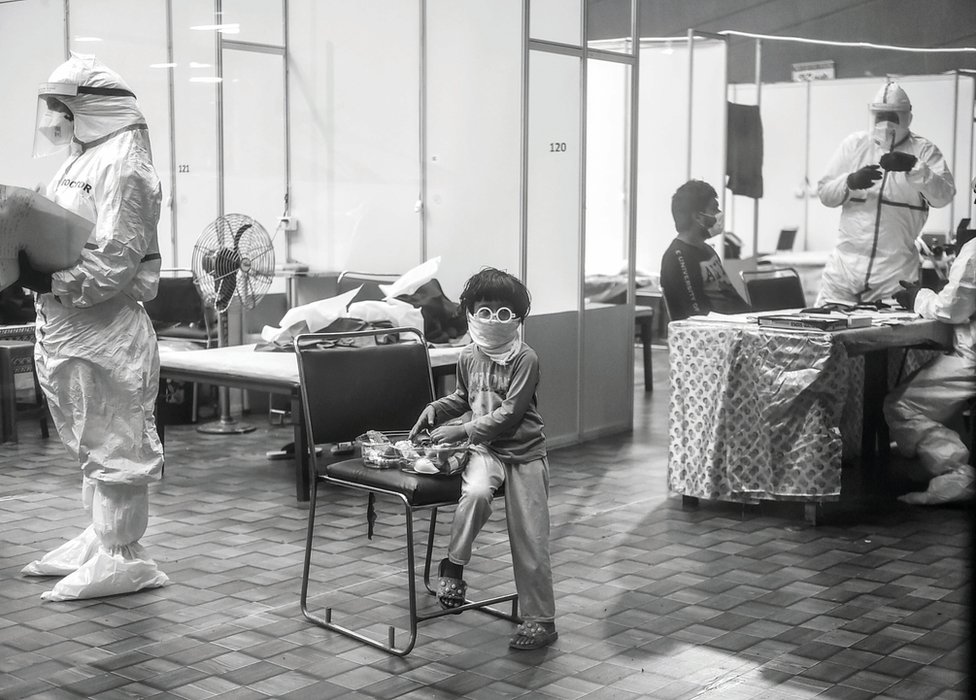 IMAGE COPYRIGHTPARUL SHARMA
IMAGE COPYRIGHTPARUL SHARMAHer shoots took a different turn as she began to document the human toll of the pandemic - the prostitutes in Delhi who were running out of money, the hungry homeless and poor, who were suddenly jobless. It was then that she began to encounter some resistance. "I was dissuaded as a woman. I faced a lot of questions," she said.
But she continued, going wherever her curiosity took her. "I don't like to be a distant spectator," she said.
 IMAGE COPYRIGHTPARUL SHARMA
IMAGE COPYRIGHTPARUL SHARMA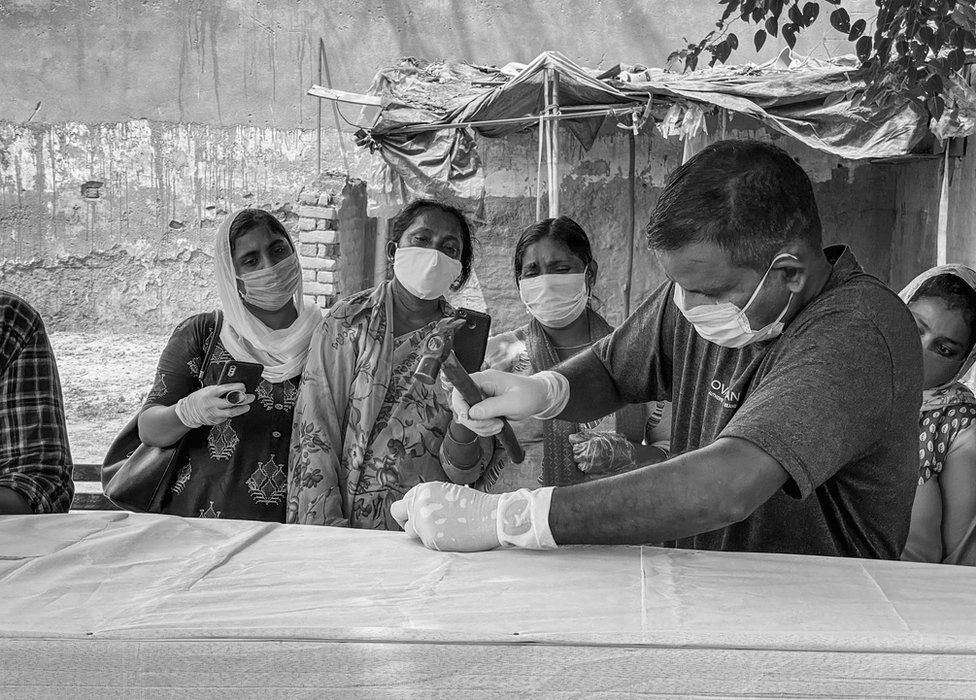 IMAGE COPYRIGHTPARUL SHARMA
IMAGE COPYRIGHTPARUL SHARMAHer work took her to Muslim cemeteries, Hindu crematoriums and to a Christian coffin-maker, who said he had never had to make so many coffins in such a short period of time.
"Death was the most frightening and most tragic," Sharma said. "There were no flowers, no goodbyes, no relatives. It was lonely for the dead."
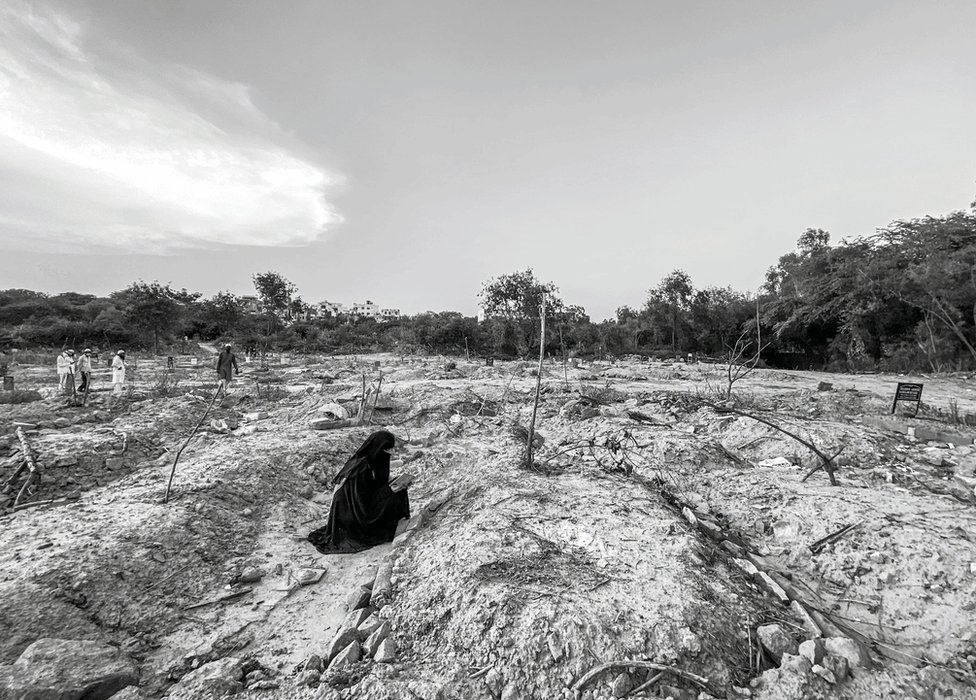 IMAGE COPYRIGHTPARUL SHARMA
IMAGE COPYRIGHTPARUL SHARMABy June, the lockdown began to ease and the "new normal" emerged. Sharma chronicled that too, including sparsely staffed, indoor shoots as advertising and films gingerly resumed activity.
 IMAGE COPYRIGHTPARUL SHARMA
IMAGE COPYRIGHTPARUL SHARMASharma's book, which was released at the end of August, won praise for its haunting and intimate portrayal of one of the world's busiest cities rendered still.
It was a "first-hand document of what Delhi went through", she said.
All images are copyrighted.

No comments:
Post a Comment